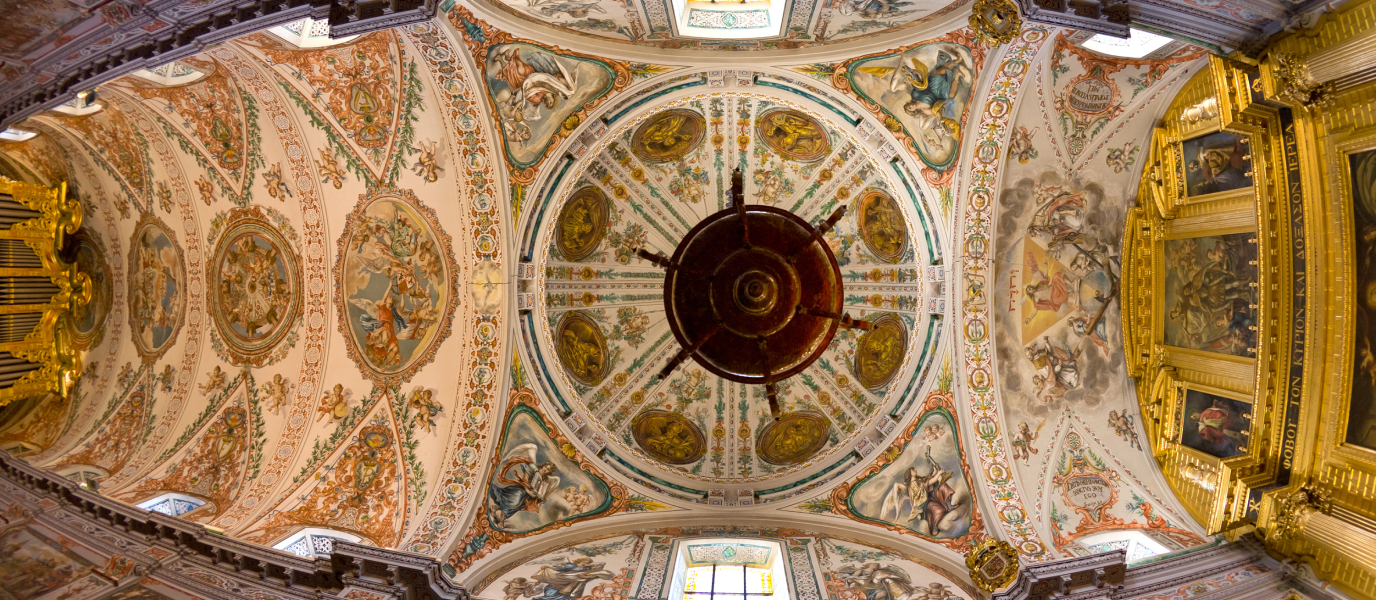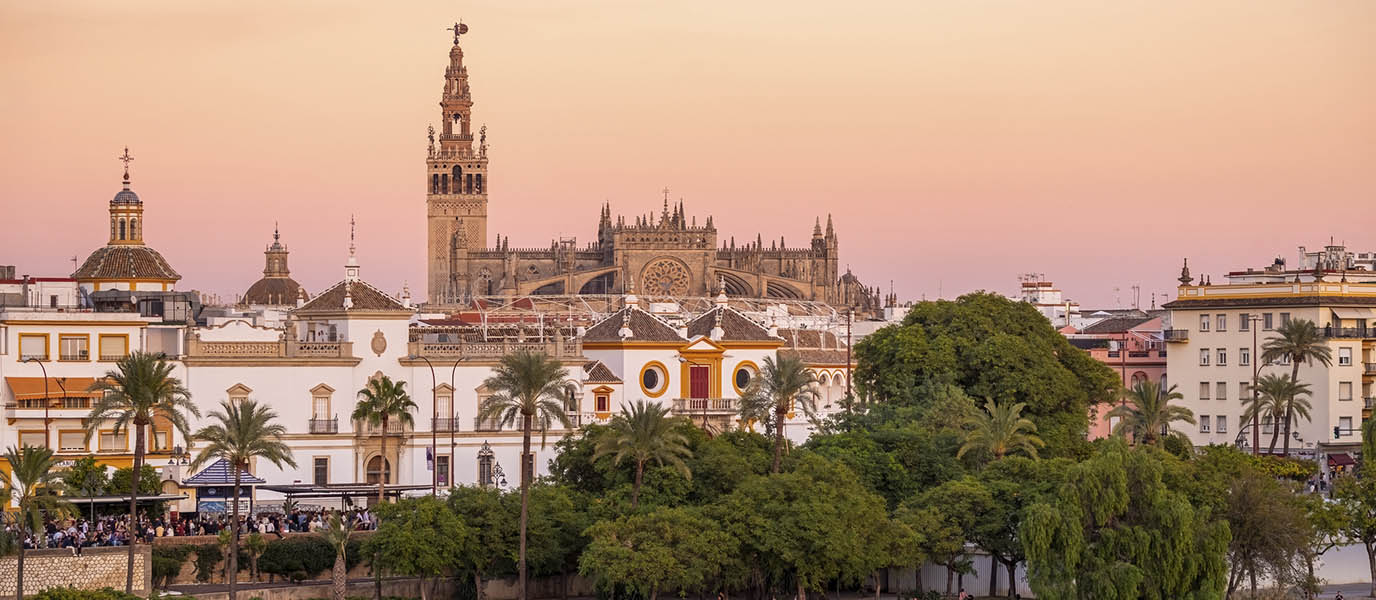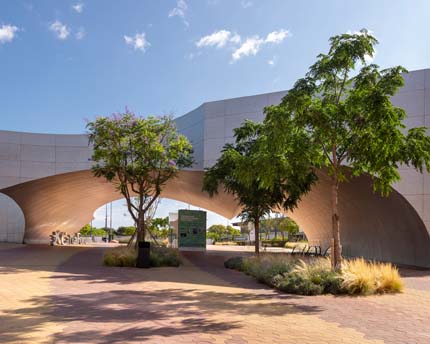On the left bank of the river Guadalquivir, close to the Maestranza bullring, stands the Torre del Oro [Tower of Gold], which has been casting its shimmering reflection onto the river since the thirteenth century. Originally a defensive watchtower built in 1220 on the orders of Seville’s Almohad governor Abù l-Ulà, it was one of the last edifices to be built in Muslim Isbiliya [the Arabic name for Seville]. In 1248, the army commanded by Ferdinand III of Castile would retake the city for the Christians. Thousands of intriguing stories, legends and false rumours have circulated about this elegant twelve-sided tower, the first of which concerns its construction, spread over five centuries and reflecting three distinct epochs in the history of Seville.
A brief history of a tiered structure
The Tower of Gold has three clearly visible tiers: The lowest twelve-sided section which forms the base of the defensive watchtower; a second, also twelve-sided but much narrower, section; and a third cylindrical tower set off with a small golden cupola. Anyone would think they formed part of a single unified design, but in fact, each tier was built in a different century and by completely different people.
The basic tier, completed in 1221, is what is known as an Albarrana tower—in other words, a tower that formed part of the defensive system of Almohad Isbiliya. In fact, the Torre del Oro closed off access to Seville’s Arenal (where the port used to be) by means of a stretch of wall connecting the tower to its universally unknown sister: the Torre de la Plata [Tower of Silver], which still stands in nearby Calle Santander, albeit in a sad state of neglect. The wall also ran by the Torre de Abd el Aziz, and continued on to link directly to the Alcázar. The second purpose of the tower was to act as a defence against enemy ships approaching via the river.
The watchtower did not acquire its second tier until the fourteenth century, when it was added on the orders of King Pedro I of Castile, nicknamed “the Cruel” by his enemies—who is buried in the Cathedral of Seville. This is how the Tower of Gold appears in several contemporary prints, but in 1760, during work undertaken to repair the damage caused by the recent Lisbon earthquake, the military engineer Sebastián van der Borcht decided to add the domed tier that gives the monument its definitive appearance.
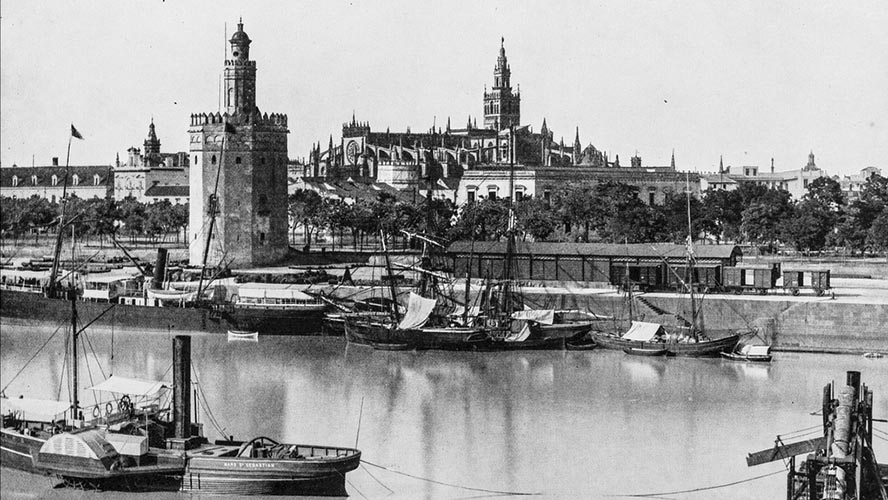
Why it is called the Tower of Gold, and other myths and legends
We know that the Tower of Gold has been known since the time of the Moors for its shimmering gold appearance (back then its name may have been Bury al-dahab), but only recently have we ascertained what produces this effect. In 2005, during the course of restoration work, scientists discovered that the shimmer is due to a mixture of mortar with lime and compressed straw. This brought an end to centuries of myths that had attributed the tower’s name to a supposed covering of tiles that reflected the rays of the sun, or to a hoard of silver and gold treasure kept there by King Pedro I.
Another false legend claimed that from the tower’s foundations a thick chain, designed to block the passage of enemy ships, stretched to the opposite bank. The truth is that during the Almohad period, there was a causeway, formed by several ships linked by a chain, which connected the city with the Triana neighbourhood. It was this chain that, in 1248, destroyed the Castillian fleet of Admiral Ramón de Bonifaz, who was sailing up the Guadalquivir to lay siege to the city. As many of those sailors were from Asturias and Cantabria, the event has been immortalised in the shield of Cantabria and those of places such as Avilés, Santander and Castro Urdiales.
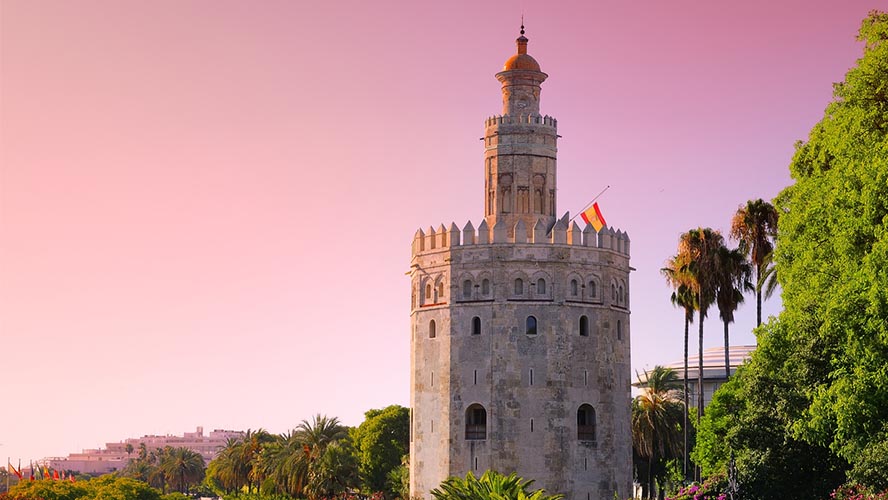
From defensive tower, via prison, and royal bachelor pad to Maritime Museum
Inevitably, such a picturesque building has had more than one function down its long history. After the Christian conquest of Seville, the tower lost its defensive role and was used as a chapel dedicated to San Isidoro of Seville, once archbishop of the city. Down the centuries, the former watchtower has also served as a prison for members of the aristocracy, a gunpowder store, and offices for the Harbour Authority and the Naval Command. Legend also tells how King Pedro I also took maidens he was courting to the Tower of Gold. The most famous of these ladies in Seville is Doña Aldonza, who is said to have lived in the tower.
The watchtower was declared a historic and artistic monument in 1931, and was restored several times during the twentieth century, partly thanks to the Spanish Armed Forces. Since 1944, the building has housed the Maritime Museum, which received 400 exhibits from the Naval Museum in Madrid. Its two floors contain a diverse array of nautical instruments, scale models of historic ships, navigation charts and documents which tell the stories of the Spanish Armada, and of Magellan’s around-the-world voyage. One very interesting item is a copy of the 1617 engraving by Johannes Janssonius, in which one can see the walled city and the Tower of Gold before the addition of its final tier in the eighteenth century. The tour ends on a panoramic terrace which commands breathtaking views of Seville and of the legendary reflection cast by the tower onto the river Guadalquivir.




































































